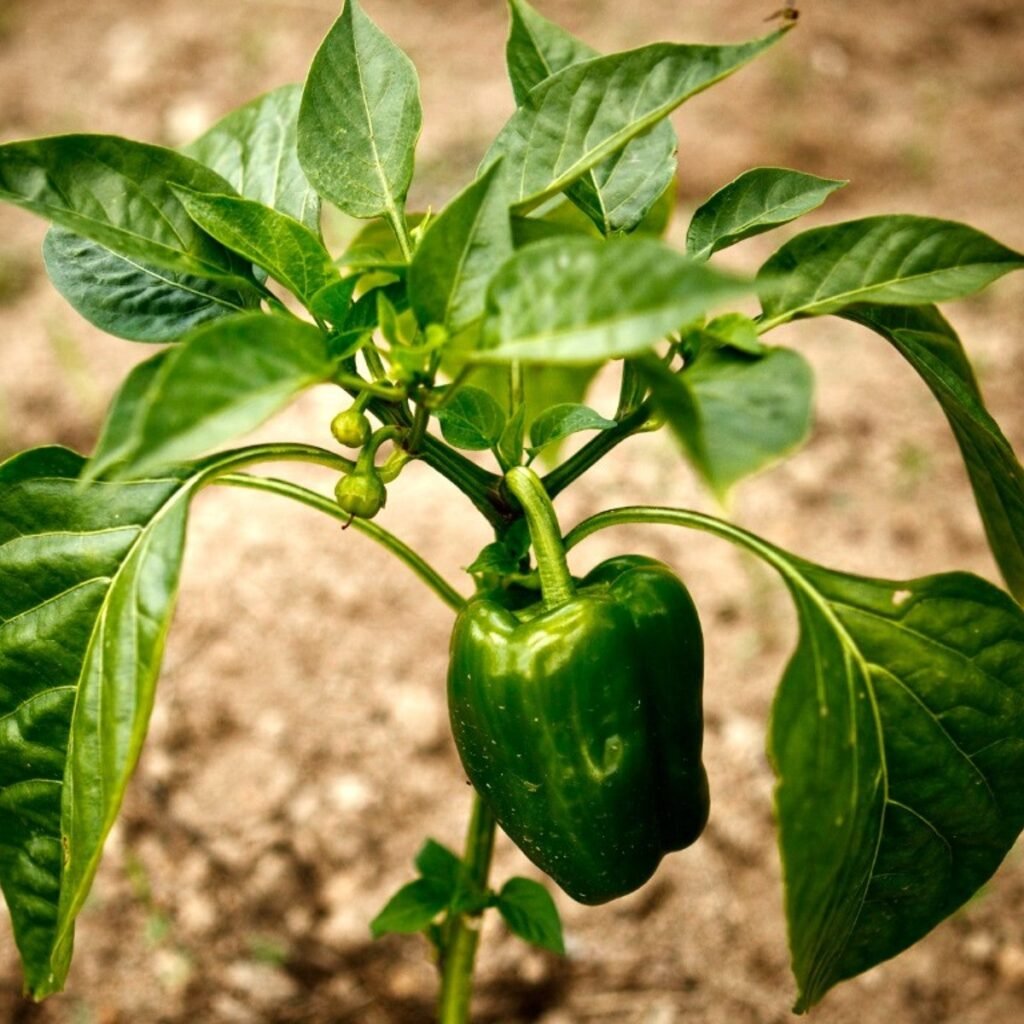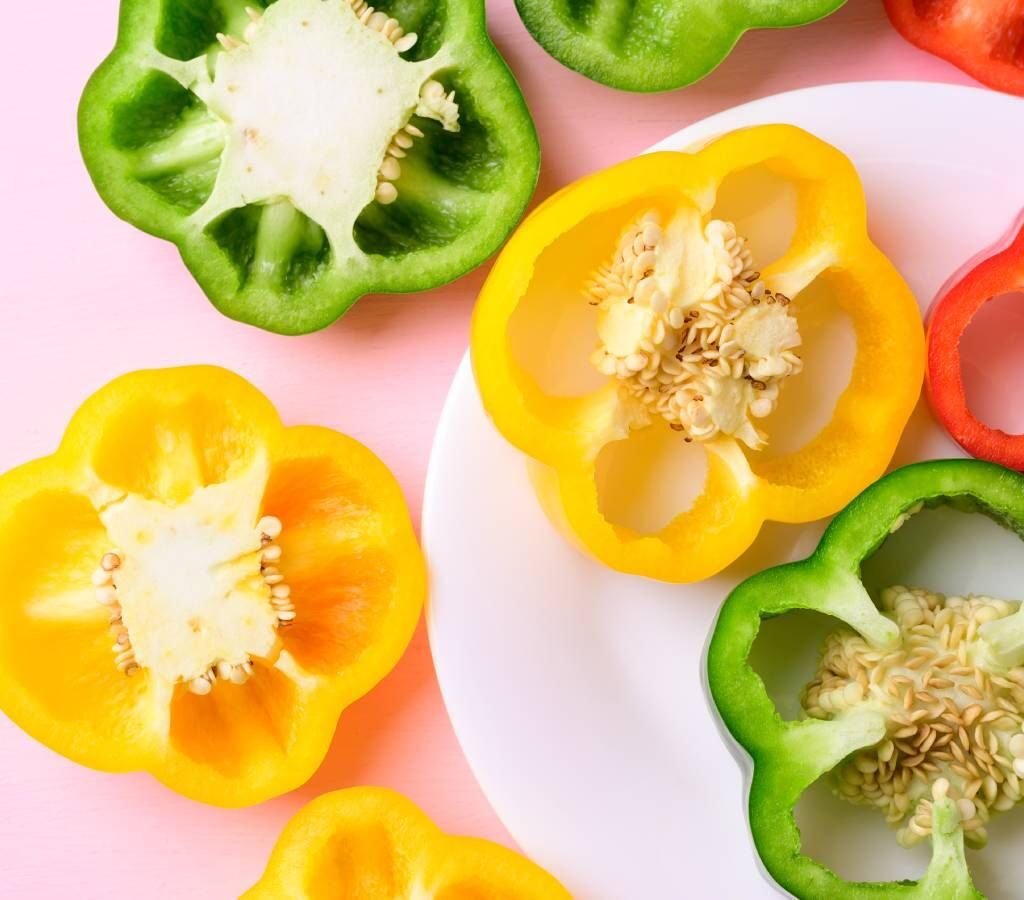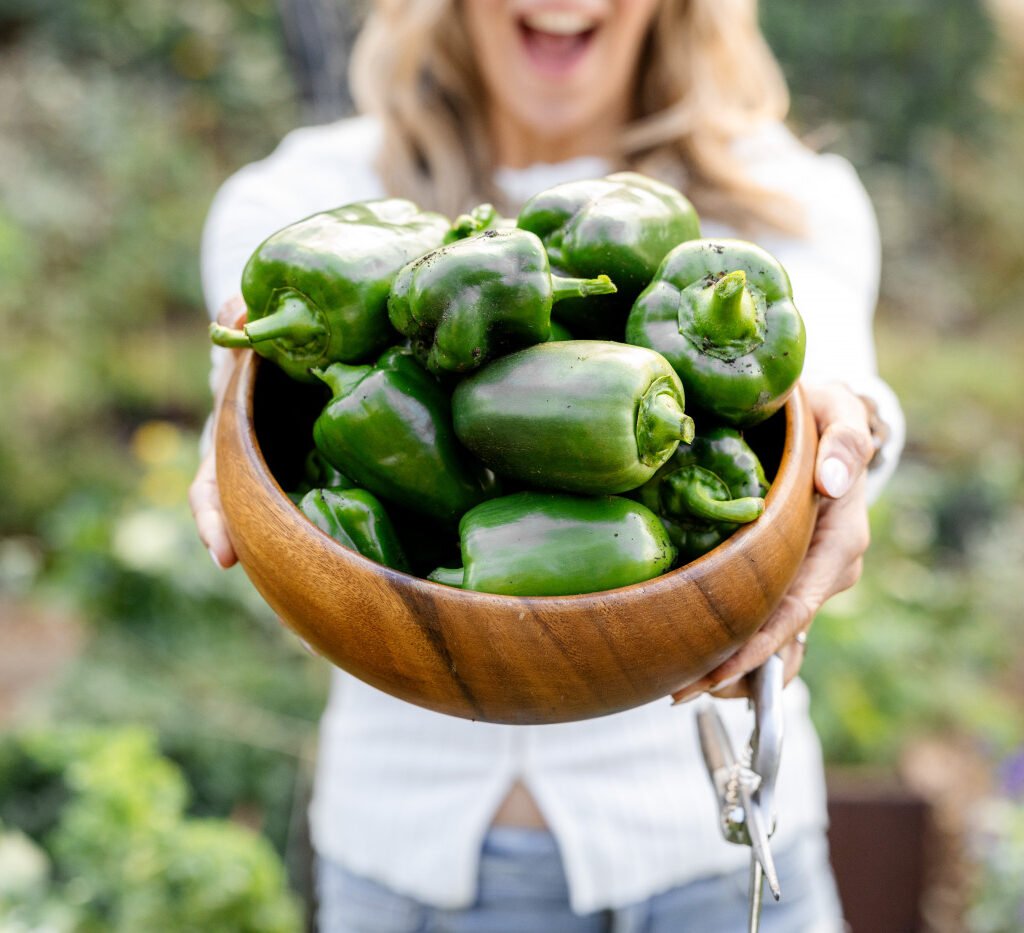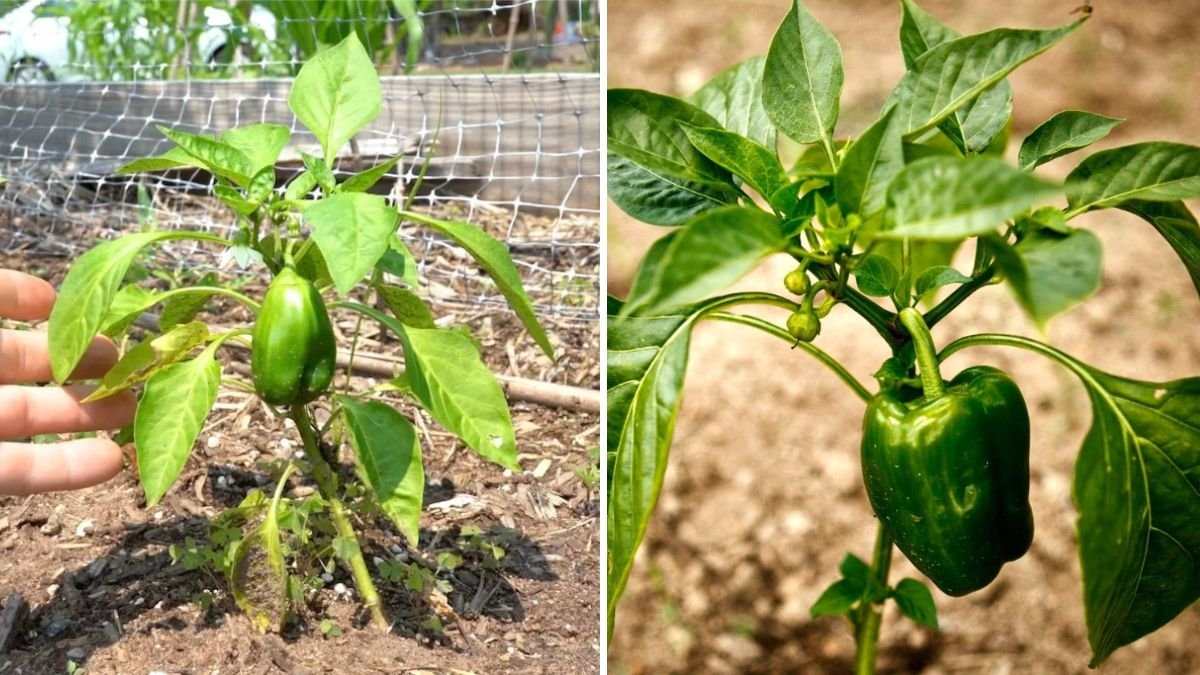Bell peppers, also known as sweet peppers or capsicum, are among the most versatile and nutritious vegetables grown in home gardens and organic farms. Rich in vitamins A, C, and K, and packed with antioxidants, bell peppers are both a healthful and flavorful addition to any meal. Growing them organically not only ensures chemical-free produce but also promotes sustainable gardening practices. This guide provides a comprehensive 6-step approach to growing bell peppers organically, from seed selection to harvesting.
Step 1: Choosing the Right Seeds

The foundation of a successful organic bell pepper crop begins with selecting high-quality seeds.
- Organic Seeds: Opt for certified organic seeds to avoid genetically modified organisms (GMOs) and chemical treatments.
- Variety Selection: Bell peppers come in various colors—green, red, yellow, and orange—each with slightly different taste profiles and growth requirements. Select varieties suitable for your local climate and growing season.
- Disease Resistance: Choose seeds with resistance to common pests and diseases like bacterial leaf spot, aphids, and fungal infections.
- Germination Rate: Check seed packaging for germination rates to ensure robust plant growth.
Starting with the right seeds sets the stage for healthy, high-yield plants.
Step 2: Preparing the Soil

Healthy soil is critical for organic bell pepper growth. Organic peppers thrive in well-drained, nutrient-rich soil.
- Soil Composition: Bell peppers prefer loamy soil with a pH of 6.0–6.8. Incorporate organic matter such as compost, well-rotted manure, or leaf mold to improve fertility.
- Soil Preparation:
- Remove weeds, rocks, and debris.
- Loosen the soil to a depth of 12–15 inches to encourage strong root development.
- Nutrient Enrichment:
- Use organic fertilizers like bone meal, fish emulsion, or kelp meal to provide essential nutrients.
- Avoid chemical fertilizers to maintain soil health and organic integrity.
- Mulching: Applying organic mulch like straw or dried leaves helps retain moisture, regulate soil temperature, and suppress weeds.
Proper soil preparation ensures that your bell pepper plants have the nutrients, structure, and environment they need to thrive.
Step 3: Sowing and Germination
Sowing bell pepper seeds requires attention to temperature, moisture, and light conditions.
- Seed Starting:
- Sow seeds indoors 8–10 weeks before the last expected frost.
- Use seed trays or small pots filled with organic seed-starting mix.
- Planting Depth: Sow seeds about ¼ inch deep and cover lightly with soil.
- Temperature and Light:
- Maintain a temperature of 75–85°F (24–29°C) for optimal germination.
- Provide 12–16 hours of light daily using natural sunlight or grow lights.
- Watering: Keep the soil consistently moist but not waterlogged. Using a spray bottle helps prevent displacing seeds.
- Germination Period: Seeds typically germinate within 7–14 days. Thin seedlings by removing weaker sprouts to ensure healthy growth.
Proper sowing techniques increase germination rates and give seedlings a strong start.
Step 4: Transplanting and Spacing

Once seedlings have grown 6–8 inches tall and developed 2–3 sets of true leaves, they are ready for transplanting outdoors.
- Hardening Off: Gradually acclimate seedlings to outdoor conditions over 7–10 days to prevent transplant shock.
- Planting Location: Choose a sunny location with at least 6–8 hours of direct sunlight daily. Bell peppers require warmth and light for optimal fruit production.
- Spacing:
- Space plants 18–24 inches apart in rows that are 24–36 inches apart.
- Adequate spacing ensures proper air circulation, reducing the risk of fungal diseases.
- Planting Technique:
- Dig holes slightly larger than the root ball.
- Place seedlings in the holes and cover with soil.
- Firm the soil gently and water immediately.
Transplanting with care and proper spacing maximizes plant health, encourages vigorous growth, and improves yields.
Step 5: Organic Care and Maintenance

Maintaining organic bell peppers involves regular watering, feeding, pruning, and pest management.
- Watering:
- Water deeply once or twice a week, depending on rainfall and temperature.
- Avoid wetting foliage to minimize fungal diseases.
- Fertilization:
- Apply organic liquid fertilizers every 2–3 weeks.
- Side-dress plants with compost or well-rotted manure to provide ongoing nutrients.
- Pruning:
- Remove lower leaves and any damaged foliage to improve airflow.
- Pinch off early flowers to promote stronger root and stem development in young plants.
- Mulching: Continue mulching to retain soil moisture, suppress weeds, and maintain temperature.
- Pest Management:
- Use neem oil, garlic spray, or insecticidal soap for common pests like aphids, whiteflies, and thrips.
- Encourage beneficial insects like ladybugs and lacewings to naturally control pests.
- Disease Prevention:
- Rotate crops annually to prevent soil-borne diseases.
- Avoid overcrowding plants and maintain clean garden practices.
Consistent care ensures healthy plants and high-quality, chemical-free bell peppers.
Step 6: Flowering, Pollination, and Harvesting

The final step focuses on encouraging flowering, pollination, and harvesting mature bell peppers.
- Flowering:
- Bell peppers produce small yellow flowers that develop into fruits.
- Adequate sunlight, proper nutrition, and watering encourage abundant flowering.
- Pollination:
- Most bell peppers are self-pollinating, but gentle shaking of flowers or attracting pollinators like bees can increase fruit set.
- Harvesting:
- Fruits are typically ready for harvest 60–90 days after transplanting, depending on the variety.
- Bell peppers can be harvested green or allowed to ripen to red, yellow, or orange for a sweeter taste.
- Use a sharp knife or scissors to cut the fruit without damaging the plant.
- Continuous Harvesting:
- Regular harvesting encourages the plant to produce more fruits.
- Avoid leaving overripe peppers on the plant as it may slow further fruit development.
Harvesting at the right time ensures maximum flavor, nutritional value, and ongoing productivity from your plants.
Additional Tips for Successful Organic Bell Pepper Gardening
- Companion Planting: Grow basil, onions, or carrots alongside bell peppers to enhance growth and reduce pests.
- Temperature Management: Bell peppers thrive in warm temperatures (70–85°F). Use row covers or shade cloths in extreme weather.
- Soil Health: Rotate crops and incorporate green manure or cover crops to maintain soil fertility.
- Record Keeping: Track planting dates, fertilization schedules, and harvest yields to improve future crops.
Implementing these tips improves success rates and promotes sustainable organic gardening practices.
Conclusion
Growing bell peppers organically is a rewarding process that combines sustainable gardening practices with the joy of harvesting fresh, flavorful produce. By following this 6-step guide—selecting the right seeds, preparing nutrient-rich soil, sowing and germinating properly, transplanting with care, providing consistent organic care, and harvesting at the right time—you can achieve healthy, high-yielding bell pepper plants without relying on chemical inputs.
Organic gardening not only ensures chemical-free vegetables for your table but also contributes to soil health, biodiversity, and environmental sustainability. With patience, attention, and proper care, anyone can cultivate a thriving organic bell pepper garden and enjoy the vibrant, nutritious fruits of their labor.
